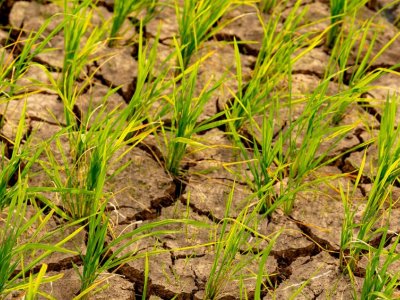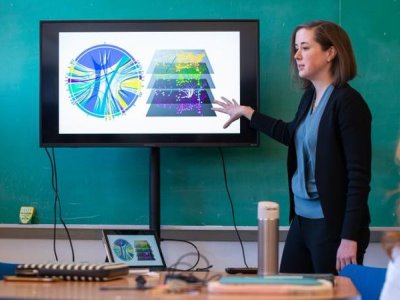In 2021, the United Nations (UN) Intergovernmental Panel on Climate Change (IPCC) released the sixth assessment report, highlighting how climate change shapes our environmental futures with more frequent and intense extreme events such as drought, floods, and sea-level rise. These natural hazards impact the ability of society to access food, energy, and water resources and introduce risks to human survival and wellbeing. Additionally, these hazards are compounded by existing vulnerabilities of certain populations and geographic locations, such as those affected by poverty and inequalities. Specifically, the report mentions that “any further delay in concerted anticipatory global action on adaptation and mitigation will miss a brief and rapidly closing window of opportunity to secure a livable and sustainable future for all.”
While there has been substantial progress investigating climate science and mitigation measures, less is known about how humans are adapting to climate change. Our recent publication in Earth’s Future sought to address this gap by investigating adaptations that target food, water, and energy security.
The Global Adaptation Mapping Initiative
Lead researchers contributing to previous IPCC reports founded the Global Adaptation Mapping Initiative (GAMI) to address the lack of data on the state of adaptation. GAMI organized a community effort among researchers to develop the first global dataset of adaptation evidence in published literature between 2013 and 2019, which consisted of over 1,600 complete records of adaptation. They assessed each record by characteristics such as hazards and vulnerabilities being adapted to, geographic regions where adaptation occurs, and people and sectors taking action. Berrang-Ford et al. (2021) published an initial synthesis of this dataset in Nature Climate Change.
Adaptations across the Food-Energy-Water Nexus
Climate change impacts natural resources used to meet both human and ecosystem needs, and adaptation is anticipated to also affect resource availability. The food-energy-water (FEW) nexus represents environmental, social, and political systems that supply and extract from interconnected resources. FEW systems are closely intertwined, and the security of one sector is rarely independent of another. For example, changes in land use and water flows, such as converting a forest into commercial agricultural land and constructing hydropower dams, can affect food and water security downstream. Adaptation has the potential for shared benefits (synergies) or unintended negative effects (trade-offs) between FEW systems. The FEW nexus may experience trade-offs and synergies in various forms, as shown in the figure below.

Using the GAMI dataset, we assessed adaptations reported to target food, energy, and water security. We aimed to answer three research questions through quantitative and qualitative evaluations:
- How are adaptations targeting food, energy, and water security?
- What trade-offs or synergies can we anticipate between adaptation characteristics and FEW security?
- Do documented adaptations take a nexus approach by considering tradeoffs and synergies in practice?
Results and Implications
We found most adaptations within each continent targeted food insecurity compared to addressing energy security and clean water and sanitation. Additionally, over 90% of these records involved individuals or households adapting to achieve FEW security goals worldwide. Numerous partnerships were prevalent among FEW adaptations, especially between households and international NGOs, and adaptations achieved through these collaborations were commonly published. These results suggested a greater urgent global response to meet immediate needs experienced in the face of food insecurity, especially in Africa and Asia, as these continents exhibited the highest number of reports.

Using statistical tests to find relationships between characteristics, we found that sustainability, cities, infrastructure, and sea-level rise were significant areas vulnerable to climate change. We also found tradeoffs and synergies among different adaptation responses that targeted FEW insecurities. Consistent relationships across statistical models indicated opportunities for mutually beneficial adaptations while contrasting relationships suggested tradeoffs between certain characteristics. For example, adaptations addressing energy and water security predicted tradeoffs between these two vulnerabilities, which is consistent with instances such as hydropower affecting downstream water flows. The results revealed synergies between addressing food security and poverty while meeting energy security resulted in a tradeoff with targeting poverty. Predicted tradeoffs from this study provide specific considerations that require more attention to avoid adverse risks when adapting to climate change.
Finally, an in-depth review of adaptation evidence showed that records reporting multiple FEW insecurities mostly concentrate on each vulnerability individually. Only 2 out of 22 articles applied a nexus approach that described adaptation responses affecting substantially interlinked FEW systems and vulnerabilities. This observation highlighted an inconsistency where tradeoffs and synergies were predicted and described as occurring within the FEW nexus. However, most implemented adaptations did not report holistic consideration of interwoven vulnerabilities.
Conclusions
This study resulted in several key messages regarding the complexities of climate change adaptations and opportunities to inform future research, policy, and implementation.
- A call for adaptation data: A limitation of the GAMI dataset is that it only explores adaptation documented in academic literature, while adaptation is likely happening in many places where it is not documented. More analysis and documentation could lead to greater knowledge sharing and advancement in adaptation across the globe.
- Responding to food versus water and energy needs: Evidence suggests that communities respond more urgently to food security needs due to the currently experienced impacts of climate change. More information is required to understand future water and energy security adaptation needs in comparison.
- Interconnected hazards and vulnerabilities: Households and communities showed to adapt to extreme events and FEW vulnerabilities that they were experiencing directly. At the same time, other hazards that cause extreme events, such as melting Arctic sea ice, were not targeted directly, implying a lack of information on the interconnectedness of cascading natural hazards and vulnerabilities.
- Benefits of the FEW nexus: Nexus-thinking aspires to intentionally consider synergies and tradeoffs between systems and vulnerabilities, resulting in more efficient and holistic adaptation. However, a limited number of adaptations currently utilize this approach.
- Opportunities for a FEW nexus approach: Sustainable urban development and infrastructure play an important role in adaptations that provide access to food, energy, and water resources, presenting an opportunity to incorporate FEW nexus frameworks.
Article Reference
S. Torhan, C. A. Grady, I. Ajibade, E. K. Galappaththi, R. R. Hernandez, J. I. Musah-Surugu, A. M. Nunbogu, A. C. Segnon, Y. Shang, N. Ulibarri, D. Campbell,E. T. Joe, J. Penuelas, J. Sardans, M. A. R. Shah and the Global Adaptation Mapping Team (2022). Tradeoffs and Synergies Across Global Climate Change Adaptations in the Food-Energy-Water Nexus. Earth’s Future, vol 10 https://agupubs.onlinelibrary.wiley.com/doi/10.1029/2021EF002201
This article was originally posted on Medium (https://medium.com/@psuwaterstudentgroup/how-are-we-adapting-df5235f3fd58) and was republished with permission.






